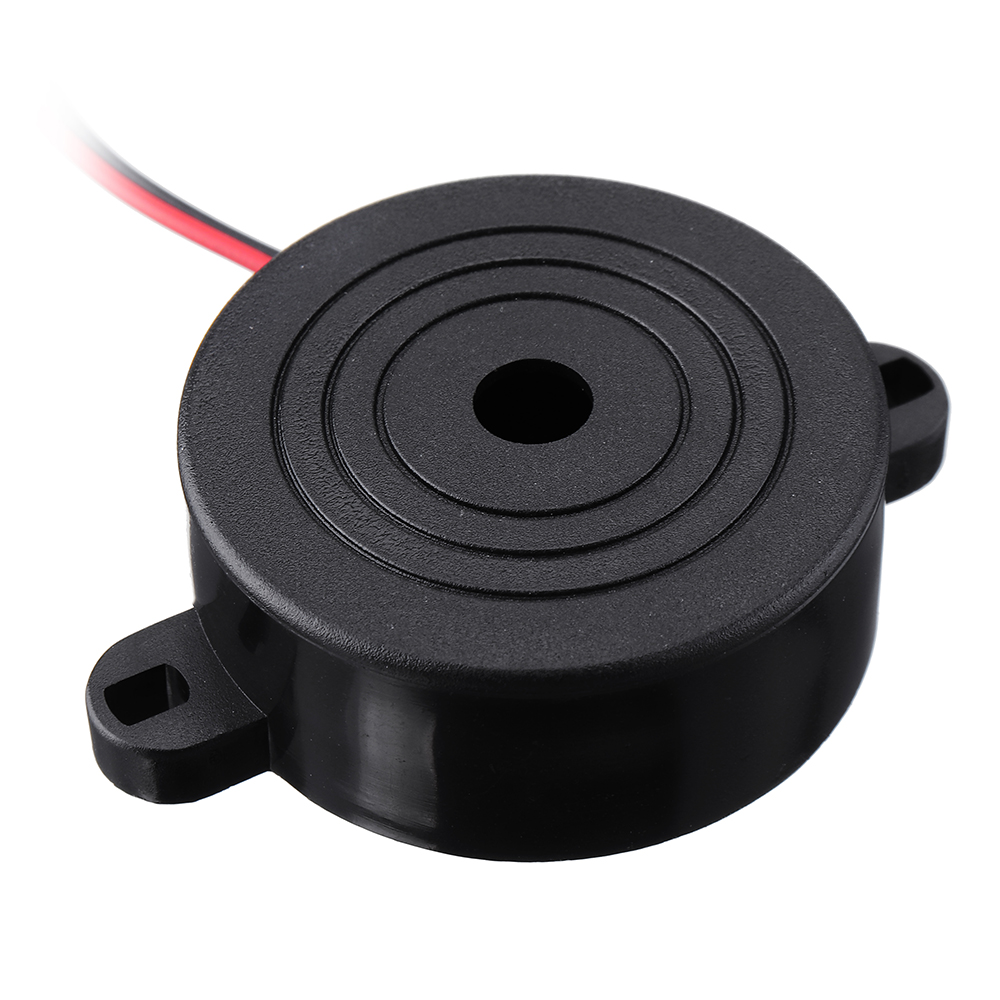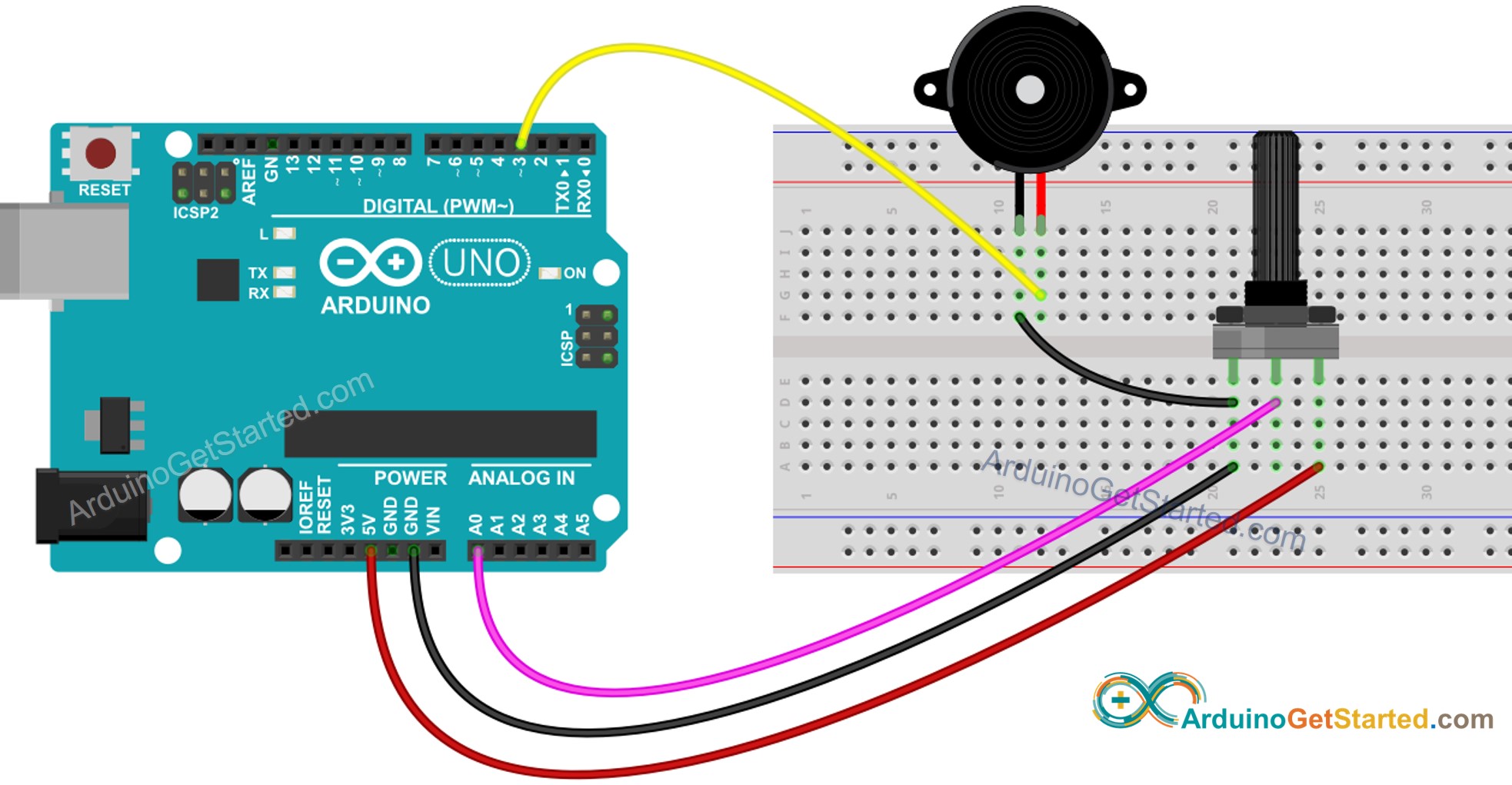
- #Arduino piezo speaker power serial#
- #Arduino piezo speaker power full#
- #Arduino piezo speaker power code#
#Arduino piezo speaker power code#
In the code this is represented by reading the analog value and if it’s over the threshold, wait until it drops down again, counting all the while. Kind of like this:īy measuring the time it takes for that first big jolt to cross a threshold, you can get an idea as how big the force was. When piezo elements are struck, their output voltage rings, sort of like a bell. The final trick is measuring impact force on a piezo. The benefit is that you no longer need a resistor to +5V and the effort to wire up each additional button is much lower. This may seem counter-intuitive, doing a digitalWrite() on an input pin, but it’s how the AVR works. This is because the internal pull-ups in Arduino’s AVR chip are turned on with a “ digitalWrite(pin,HIGH)“. The next tricky bit is that the switches in the above schematic don’t need pull-up resistors. Once that is done, a complete three-byte MIDI note-on message can be sent with three “ Serial.print(val,BYTE)” commands. This is easily done with “ Serial.begin(31250)“.
#Arduino piezo speaker power serial#
First is that to implement a MIDI interface, all you really need is the ability to send serial data at 31,250 bps. The code has a few tricks that may not be immediately obvious. The 5.1v zener diode is there to insure any large voltages don’t make it into the Arduino and blow it out. (Note: depending on what kind of MIDI connector you’re usign (jack or cut-off cable), you may need to swap the connections to MIDI pins 4 & 5).įor the piezo input, the 1M resistor is to bleed off the voltage generated by the piezo when it is struck. The hardware is an Arduino board with a MIDI jack, a few buttons, and two piezos attached to it. Hide piezo sensors around the house during your Halloween party to trigger scary sounds when people walk around! Here’s a quick project using techniques from this week’s class that turns an Arduino board and a few buttons and piezos into a MIDI drum kit or scary sound trigger. Arduino MIDI Drum Kit and Spooky Sound Trigger Click above for a larger view of the badge. At the end of the class, Mark of Machine Project bestowed upon each of the students a merit badge. Create a dictionary called notes with the following values.The notes for the fourth and final class are up on the Spooky Arduino class page. Import the necessary libraries and initialize PWM on pin 15. We’ll use these values to create a list we can use to play any song early in our code.ġ.

There are a few lists of musical note frequencies online and many of them trace back to Brett Hagman’s Arduino tone library on Github.
#Arduino piezo speaker power full#
Playing Music with a Buzzer on Raspberry Pi Picoīecause you can use different frequencies, you can create a full array of musical notes. Your final code for this simple test should look like this. If you don’t do this, the buzz will continue, even after the program is finished executing. Set a 1 second delay and then set duty to 0 so that the sound stops. Considering how quiet these buzzers are, maximum volume isn’t very loud at all.

A lower value is quieter and 0 is no sound at all. This makes the buzzer as loud as it can be.

Set the duty_u16 property of the buzzer object to 1000. The higher the number, the higher pitched the sound. You must choose a number that ranges between 10 and 12,000. Initialize PWM (aka pulse width modulation) on Pin 15 and assign it to the variable buzzer.


 0 kommentar(er)
0 kommentar(er)
